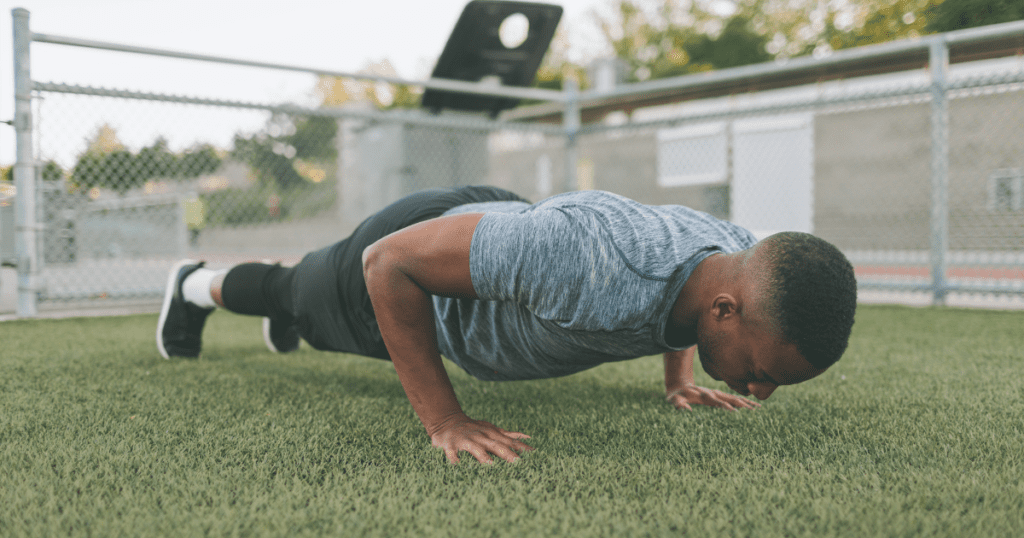Which Push-Up Variation Is Best for You? Wide vs. Close Grip Push-Ups
The Ultimate Guide to Push-Ups – Wide vs. Close Grip and Which One is Best for You
Push-ups are one of the most effective and versatile bodyweight exercises you can do. They don’t require equipment, can be done anywhere, and work multiple muscle groups simultaneously. But did you know how you position your hands during a push-up can completely change the muscles you target? This blog will discuss the differences between wide and close push-ups, their benefits, and which variation might be best for your fitness goals.
What Are Push-ups and Why Are They So Effective?
Push-ups are a classic exercise targeting your chest, shoulders, triceps, and core. They also engage your back, glutes, and legs to some extent, making them a full-body workout. The beauty of push-ups lies in their simplicity and adaptability. Whether a beginner or an advanced fitness enthusiast, you can modify push-ups to suit your strength level.
But not all push-ups are created equal. The placement of your hands can significantly impact which muscles are worked the most. Let’s dive into the two most popular variations: wide push-ups and close push-ups.
Wide Push-Ups: What Are They and What Do They Target?
Wide push-ups are performed by placing your hands wider than shoulder-width apart. This variation shifts the focus toward your chest muscles (pectorals) and shoulders (deltoids). Here’s why:
-Chest Activation: The wider hand placement increases the range of motion for your chest muscles, making them work harder to push your body up.
-Shoulder Engagement: Your shoulders also play a significant role in stabilizing your body during wide push-ups.
-More manageable for Beginners: Because wide push-ups distribute the workload across a larger muscle group, they can feel more manageable than close push-ups.
However, wide push-ups may put more strain on your shoulder joints, especially if you have existing shoulder issues. It’s essential to maintain proper form to avoid injury.
Close Push-Ups: What Are They and What Do They Target?
Close or narrow or diamond push-ups are performed with your hands placed closer together, usually directly under your chest or touching to form a diamond shape with your thumbs and index fingers. This variation shifts the focus to your triceps and inner chest muscles. Here’s why:
-Triceps Activation: The closer hand placement forces your triceps to work harder to lift your body.
-Inner Chest Engagement: Close push-ups also target the inner part of your chest, which is often harder to activate with other exercises.
-Core Stability: Because your base is narrower, your core has to work harder to keep your body stable.
Close push-ups are generally more challenging than wide push-ups, making them an excellent option for those looking to build upper body strength and endurance.
Wide Push-Ups vs. Close Push-Ups: Key Differences
To help you decide which variation is best for you, let’s compare the two:
| Aspect | Wide Push-Ups | Close Push-Ups |
| Hand Placement | Wider than shoulder-width | Closer than shoulder-width or touching |
| Primary Muscles Worked | Chest, shoulders | Triceps, inner chest |
| Difficulty Level | Easier for beginners | More challenging |
| Joint Stress | More strain on shoulders | More strain on elbows and wrists |
| Best For | Building chest and shoulder strength | Building triceps and inner chest strength |
Which Push-Up Variation is Best for You?
The best push-up variation depends on your fitness goals, strength level, and existing injuries or limitations. Here’s a quick guide to help you decide:
-If You’re a Beginner: Start with wide push-ups. They’re easier to perform and help build foundational strength in your chest and shoulders.
-If You Want to Build Triceps Strength, Go for close push-ups. They’re more challenging but highly effective for targeting your triceps.
-If You Have Shoulder Issues: Avoid wide push-ups, as they can put extra strain on your shoulder joints. Instead, opt for close push-ups or modify your hand placement to a more comfortable width.
-If You Want a Balanced Workout: Incorporate both variations into your routine; this ensures you’re targeting all the major muscle groups in your upper body.
Tips for Proper Push-Up Form
No matter which variation you choose, proper form is key to maximizing results and preventing injuries. Here are some tips:
-Keep Your Body Straight: Your body should form a straight line from your head to your heels. Avoid sagging your hips or arching your back.
-Engage Your Core: Tighten your core muscles to stabilize your body throughout the movement.
-Lower Yourself Slowly: Control your descent to maximize muscle engagement and avoid dropping too quickly.
-Breathe Properly: Inhale as you lower your body and exhale as you push back up.
How to Incorporate Push-Ups into Your Routine
Push-ups can be done as part of a warm-up, a full-body workout, or a dedicated upper-body routine. Here are a few ideas:
-As a Warm-Up: Do 2-3 sets of 10-15 push-ups to activate your upper body muscles before a workout.
-As a Standalone Exercise: Perform 3-5 sets of 10-20 push-ups, depending on your fitness level.
-In a Circuit: Combine push-ups with exercises like squats, lunges, and planks for a full-body workout.

Final Thoughts
Both wide push-ups and close push-ups are excellent exercises with unique benefits. Wide push-ups are great for building chest and shoulder strength, while close push-ups are ideal for targeting your triceps and inner chest. By incorporating both variations into your routine, you can ensure a well-rounded upper-body workout.
Remember, consistency is key. Whether you’re doing wide, close, or a mix of both, stick with it, and you’ll see progress over time.




















Leave a Comment
Your email address will not be published. Required fields are marked with *